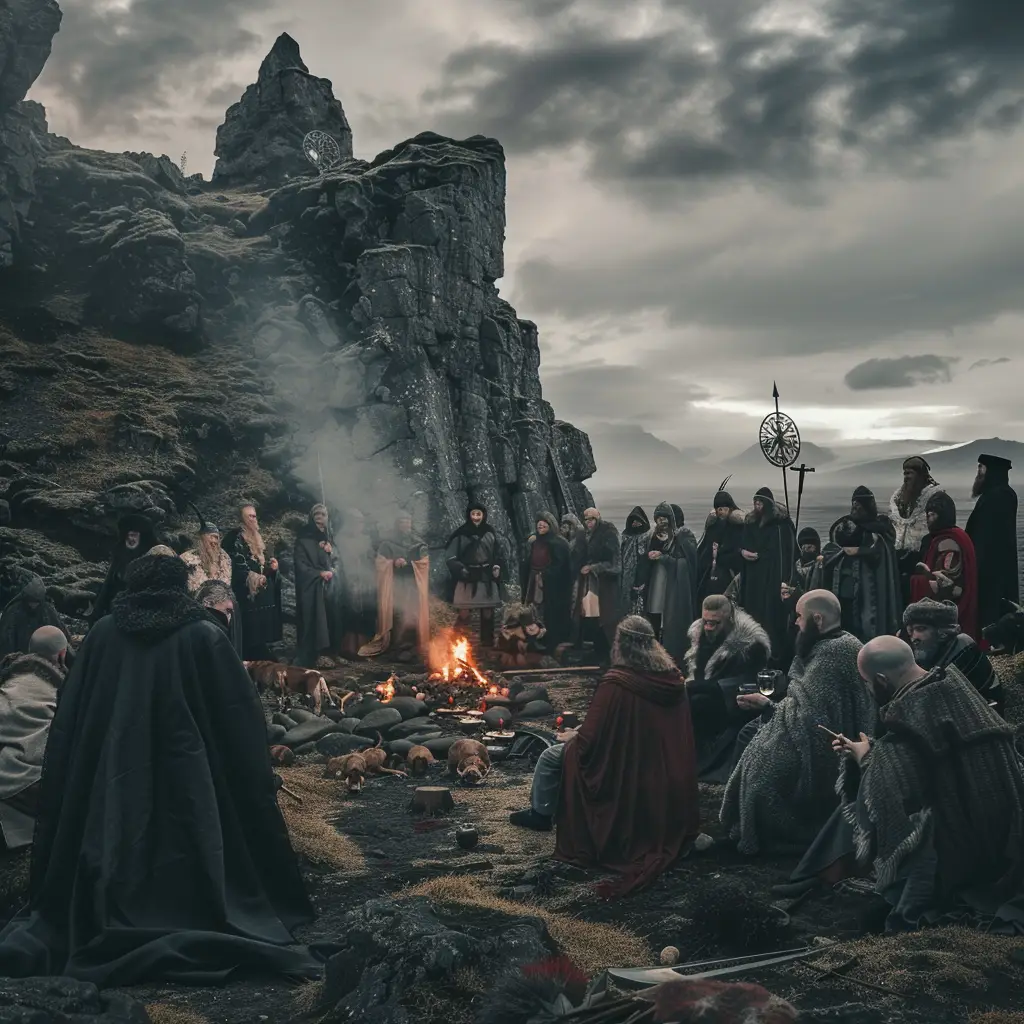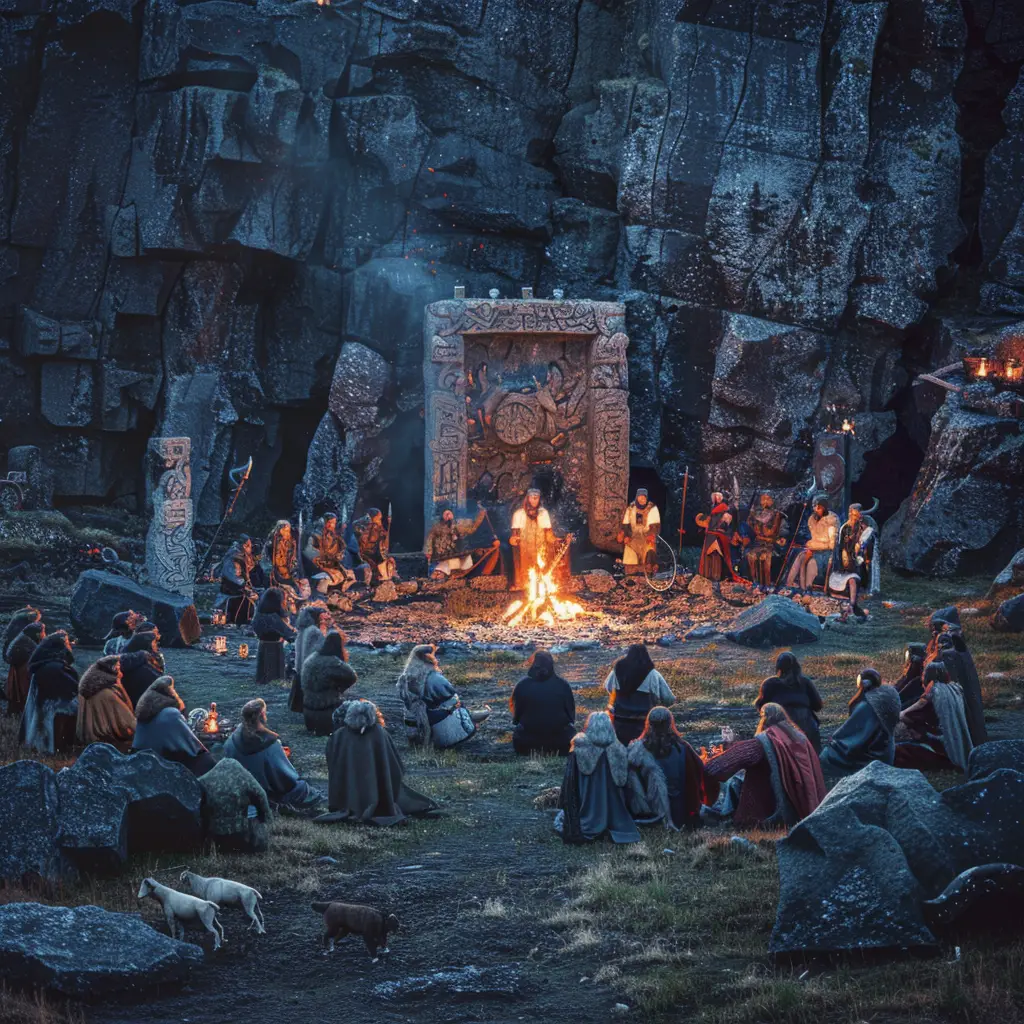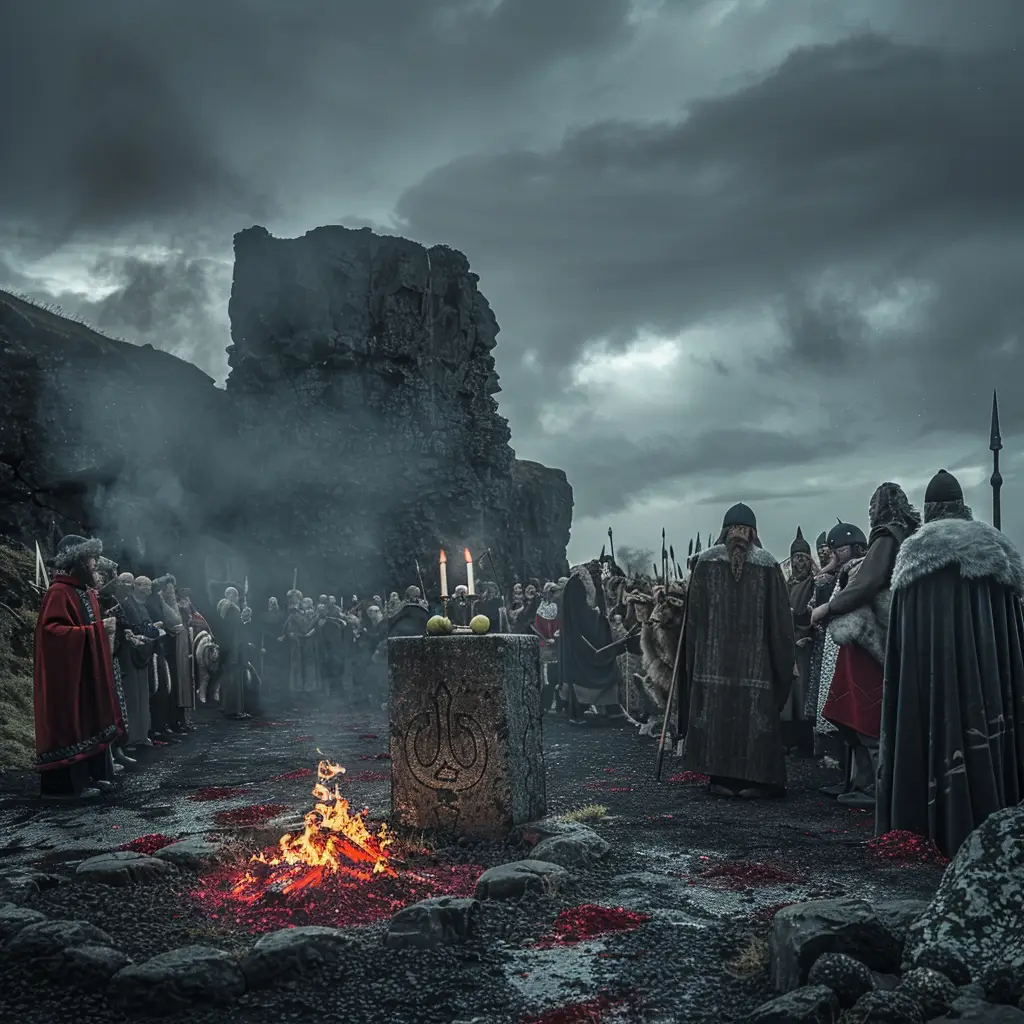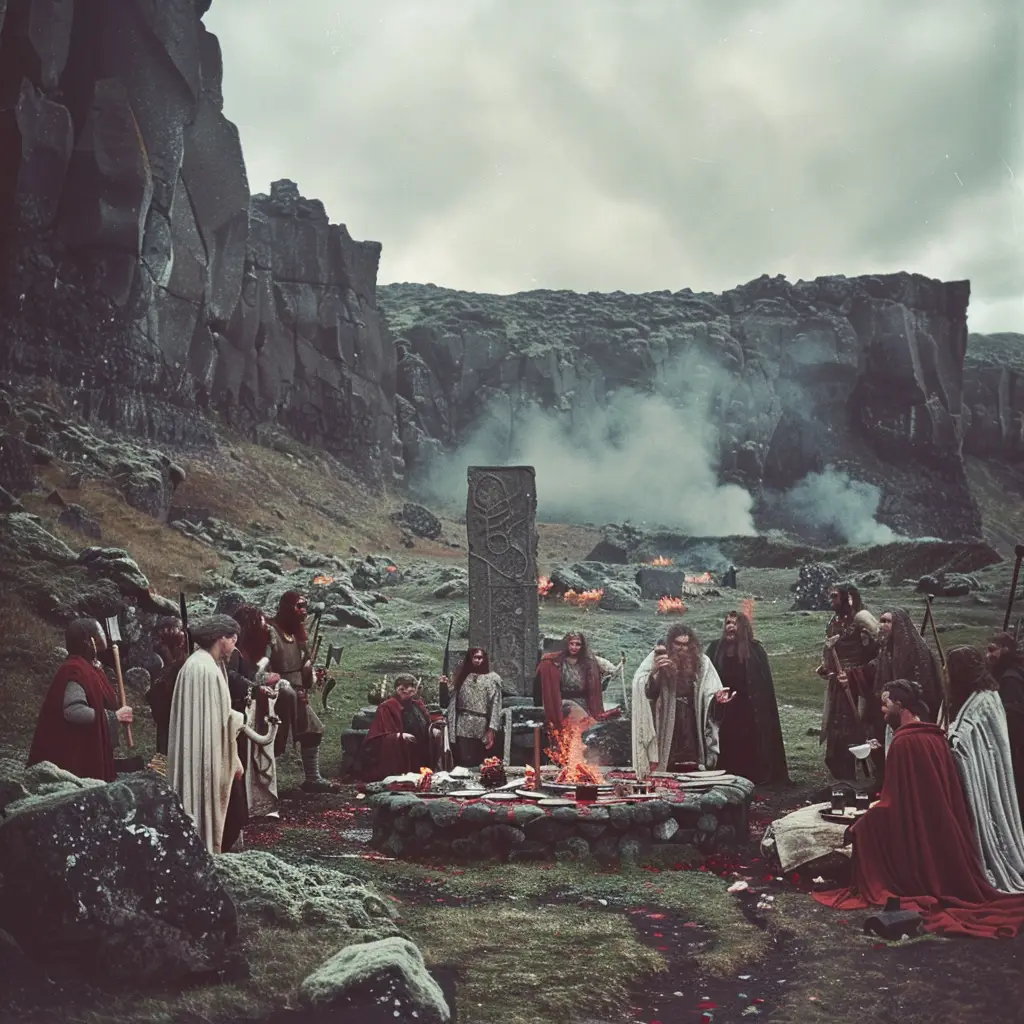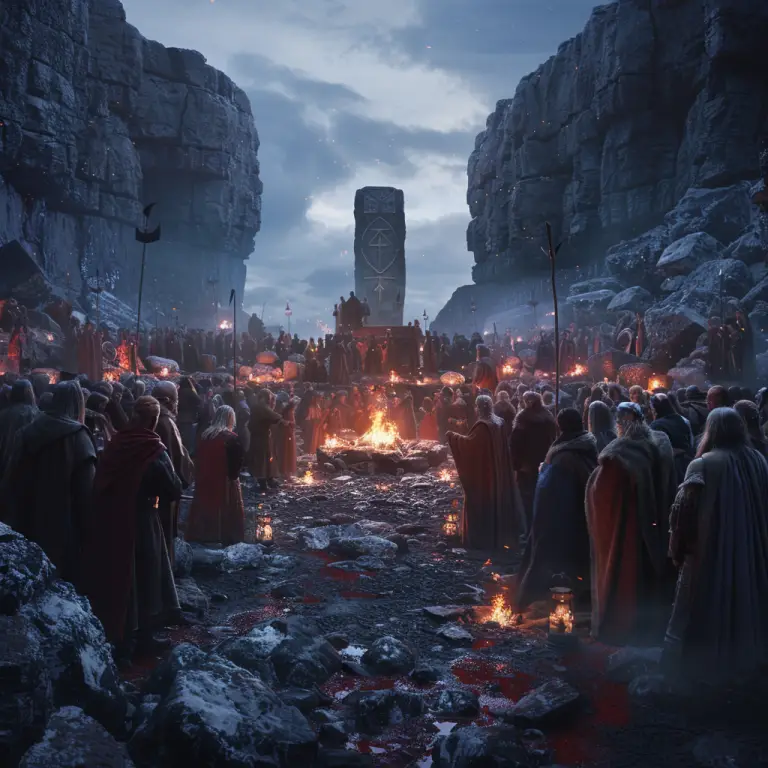The Althing Blót was a pagan sacrificial ritual that took place during the Althing, the general assembly held in Iceland. The Althing was one of the oldest forms of parliament in the world, established in 930 CE at Þingvellir. This annual gathering was where Icelanders from across the island came together to make legal decisions, resolve disputes, and perform religious ceremonies, including the blót (sacrifice) to honour the Norse gods and seek their blessings.
Combination of Law and Ritual: The Althing served as both a legislative and judicial assembly and a venue for religious practices, uniting the community in both governance and faith. The blót was a critical part of the event, held to seek the gods’ favour for justice, harmony, and prosperity.
Norse societies often combined law and religion, as spiritual blessings were seen as essential for maintaining order and stability.
Sacrifices to the Gods: As in other Norse blóts, the Althing Blót would involve sacrifices of animals, typically cattle, horses, or sheep. Animal blood was sprinkled on idols, sacred sites, and participants as a form of blessing and sanctification.
The sacrifices were made to gods like Thor (protector and patron of justice), Odin (wisdom and guidance), and Frey (peace and prosperity). The blót sought the gods’ favour for the assembly’s decisions and for Iceland’s well-being as a whole.
Communal Feasting: Following the sacrifices, participants would engage in a feast with the sacrificial meat. This communal meal was important for strengthening bonds, settling disputes, and reaffirming social ties.
Mead and ale were consumed, and toasts, called bragarfull, were made in honour of the gods, ancestors, and the community’s prosperity.
Location and Sacred Atmosphere: Held at Þingvellir, a dramatic landscape with rocky cliffs and a rift valley, the Althing had an inherently sacred setting. The natural surroundings contributed to a reverent atmosphere and reinforced the connection between the land, the community, and the gods.
People saw Þingvellir as both a legal and spiritual centre of Iceland, where the physical landscape itself was tied to the divine and the laws governing the people.
Social and Legal Importance: The Althing Blót provided a platform for legal proceedings and reinforced the authority of the Lawspeaker (lögsögumaður), who recited Icelandic laws from memory. The presence of the blót reminded people of the divine backing of laws and justice.
The assembly was a time for Icelanders to reconcile disputes, forge alliances, and settle grievances, all of which were performed under the gods’ watchful eyes through the sacrificial ritual.
End of the Althing Blót: The Althing Blót continued until Iceland’s official conversion to Christianity in 1000 CE. At that point, leaders outlawed pagan practices like the blót, though some pagan elements likely persisted in private for years. Iceland’s conversion was largely peaceful, negotiated by the Althing itself, showing the respect for communal decisions even in religious change.
The Althing Blót symbolized the unity of law, community, and faith in Norse society. It reinforced the idea that law and justice were sacred, rooted in the blessings of the gods. The ritual at Þingvellir brought Icelanders together annually in a collective act of devotion and reinforced the shared values and governance that defined their society.
